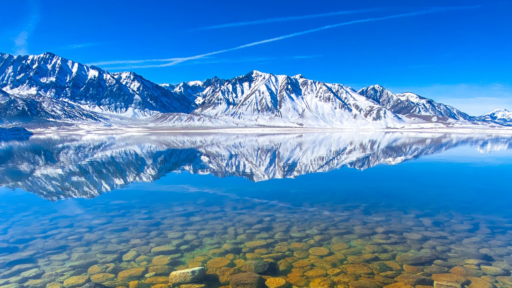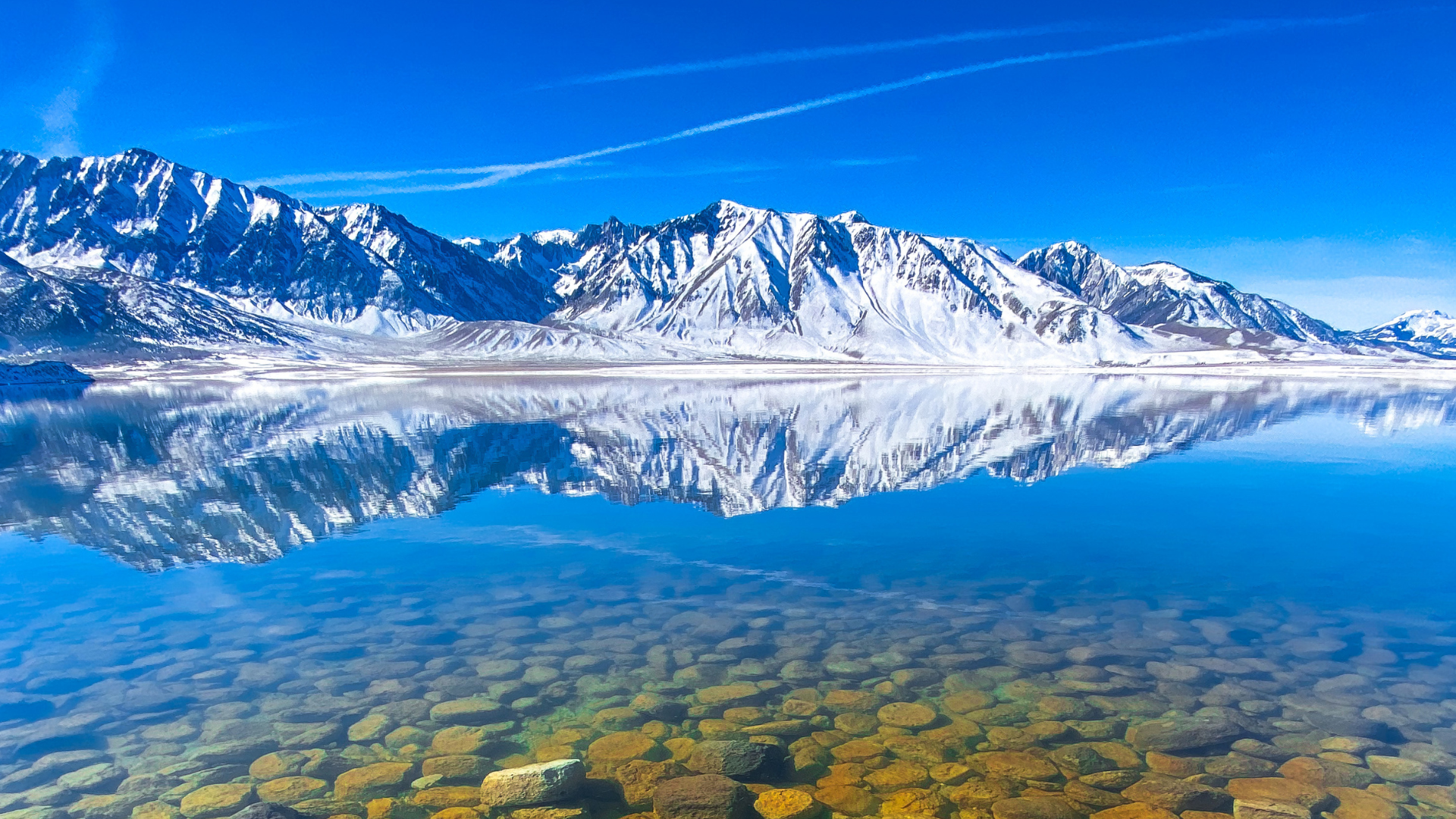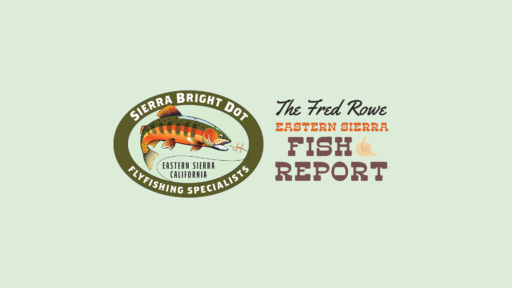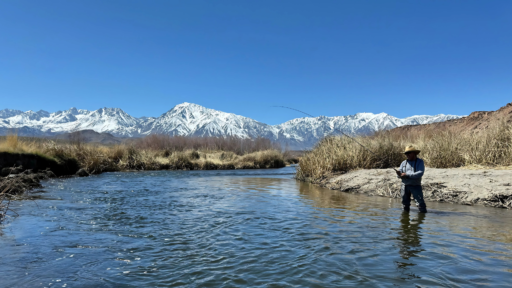TL:DR: Whether you’re new to fishing or a seasoned angler, understanding fishing best practices is crucial to protecting the waterways we love—and the fish that live in them. From streamside etiquette to proper handling techniques, these tips will help you enjoy your time outdoors while ensuring healthy fisheries for generations to come.
Download Bishop Visitor: Fishing Map
Land It Quick, Handle It Less
If you’re practicing catch-and-release (and even if you’re not), the #1 rule is to minimize stress and harm to the fish.
• Land your fish as quickly as possible. Long battles exhaust fish, reducing their chances of survival after release.
• Never drag fish onto dry land. Sand, rocks, and plants can damage the protective slime coat that keeps trout healthy.
• Keep the fish wet. Unhook underwater if you can. If not, minimize air exposure to just a few seconds.
• Use wet hands only. Never use a rag or dry hands—this strips the slime coat and increases risk of infection.
Hook Smarter, Not Harder
The right tackle makes a huge difference in both fish survival and your overall experience.
• Use barbless hooks. Easier to remove, better for the fish, and often required in catch-and-release waters.
• Stick to artificial lures or flies. Bait fishing often results in deeper hooking, which is harder on fish.
• Clip the line if the hook is deep. Don’t try to dig it out. The hook will rust and dissolve naturally.
Clean Up Your Act
Anglers have a big impact on the health of streams and lakes—positively or negatively.
• Pack out all fishing line, hooks, and trash. These can entangle or injure wildlife, pets, and other people.
• Use designated fish-cleaning stations. If none are available, double-bag waste and dispose of it in a bear-safe trash can.
• Don’t wash bait containers or gear in streams or lakes. Use biodegradable soap—away from water—and rinse at least 200 feet from any body of water.
Know the Rules, Respect the Resource
• Check local regulations. Each body of water might have different seasons, limits, gear restrictions, and closures.
• Respect seasonal closures and sensitive habitats. Spawning season is critical for fish populations—don’t disrupt it.
• Fish early or late in the day during summer. High water temps reduce oxygen and stress fish out faster.
Catch the Vibe, Not Just the Fish
Fishing is about more than just what’s on the line. It’s about being outside, slowing down, and connecting with the land.
• Share the space. Be courteous to other anglers and water users.
• Teach the next generation. Bring a kid (or a friend) and show them how to fish with care.
• Leave the spot better than you found it. Even if it’s not your trash—pick it up.
• Drive slow on dirt roads and through small towns.
If You Love It, Protect It
We get it—you just wanted to fish. Not read a manifesto. But the Eastern Sierra is sacred to a lot of people, and it deserves respect. Healthy fisheries don’t happen by accident. They’re the result of educated anglers, clean waterways, and intentional conservation.
Whether you’re fishing in Bishop, Lone Pine, Mammoth, Bridgeport or June Lake, your actions on the water matter.
Be mindful. Be respectful. And always follow Leave No Trace principles.
#packitinpackitout #leaveitbetter #leavenotrace #camplikeapro





